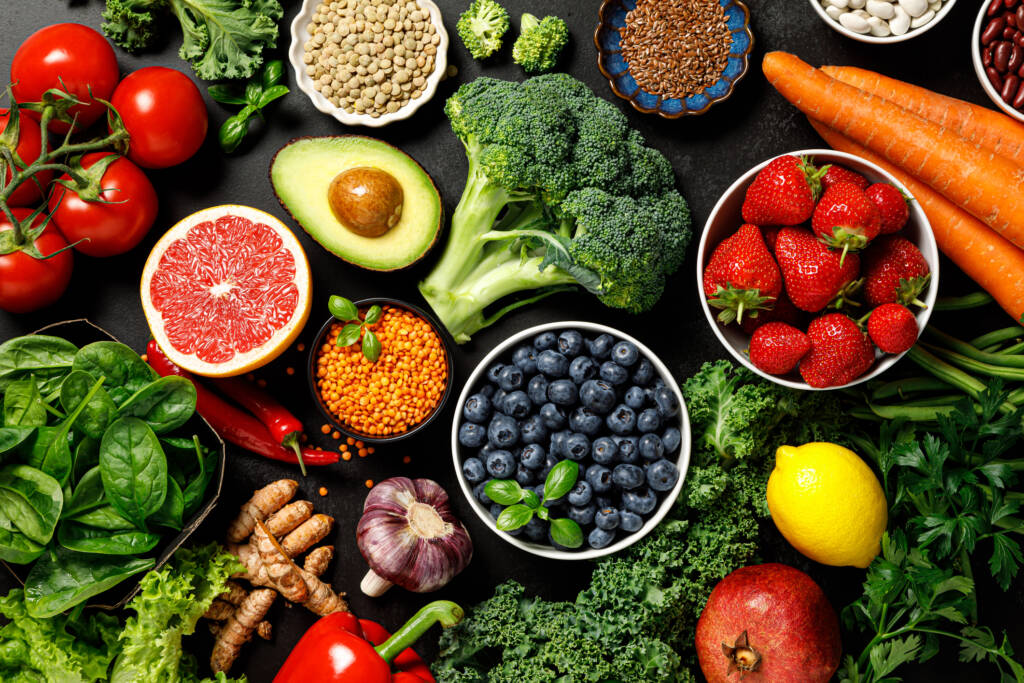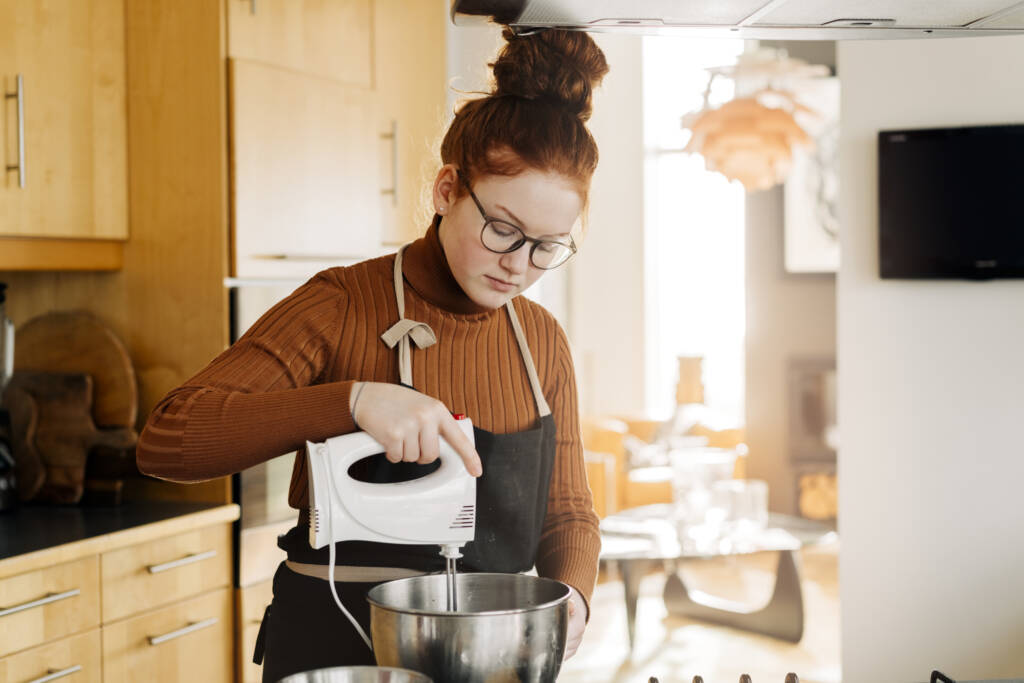
Culinary Arts 2

Culinary Arts 2: Baking, Pastry, and More!
Whether you aspire to be a world-class chef or just want to learn the skills needed to create your own dishes, Culinary Arts 2 will help you build a strong foundation and grow your knowledge of this exciting industry. In this course, you will explore baking and desserts, learn how to prepare proteins, and study nutrition and safety in the kitchen. You will also enhance your understanding of sustainability in the food industry, learn to prepare meals from a global perspective, and dissect the business of cooking, from managing a kitchen to successfully running a catering company. Discover the delights that await you on this delicious culinary adventure!
During this course, you will learn career-related skills and earn a badge for this accomplishment. A badge is a digital certification of your career-related learning that you can share on social media and higher education platforms, or with colleges, potential employers, peers, and colleagues. Select this link to learn more about badges.
Major Topics and Concepts
Unit 1: The Basics of Baking
Unit Summary: Although there are many specialties in the culinary arts, baking is among the most popular and versatile. Building a career in this field requires knowing some kitchen basics, including having a working knowledge of baking. After all, not only is baking the key to many delicious dishes, but it is also a great way to learn important skills such as how to measure properly, convert recipes, and maintain equipment. And once you’ve got these skills under your belt, you’ll be ready to delve into the wonders of baking!
Learning Objectives:
• Trace the origins of commercial baking
• Apply common equivalents and abbreviations
• Scale recipes to make desired quantities
• Describe basic kitchen equipment and its uses
• Detail the cleaning and care of kitchen equipment
Unit 2: Bread
Unit Summary: Walk into your local bakery or the bakery section of your local supermarket and you will find many different kinds of bread. Some will be dark while others are light and fluffy. Others will be made of multiple grains or have a thick crust. But what creates these differences? And what makes them all bread? It all comes down to the ingredients, from the type of flour used to the amount of butter in the batter. We’ll explore the elements of bread and the chemistry that happens when they come together. Whether a time-consuming yeast bread or a basic quick bread, there is a lot to learn about this bakery staple!
Learning Objectives:
• Store and handle bread baking ingredients
• Identify ingredients used in baking bread
• Differentiate how distinct types of crust are formed
• Discuss the differences between hard, soft, and enriched doughs
• Prepare yeast and quick breads
Unit 3: Pies and Pastries
Unit Summary: When you think about dessert, what comes to mind? Freshly baked pies? Fancy French pastries? Crisp cookies with gooey centers? A talented baker can make any of these with ease. Like bread, these desserts are all about the dough. They represent other ways in which bakery staples like flour, butter, eggs, and sugar can be arranged. But these baked goods are not just for dessert; there are plenty of meat-filled pies and pastries that make a hearty meal. Pies and pastries are great vehicles for fillings, particularly fruit and creams. Cookies can also take on many different flavors and textures, making them a diverse dessert category of their own. There are a lot of possibilities for dessert when baking!
Learning Objectives:
• Compare different types of pie crust and fillings
• Identify qualities of different pastry dough
• Prepare pies and cookies
• Determine the elements of a cookie’s texture
• Differentiate among types of cookie dough
Unit 4: Cake
Unit Summary: Are you one of those people who thinks that cake is all about the frosting? Or are you the one eating your cake plain, fresh out of the pan? Or is a festive cupcake your go-to snack? When it comes to cake, there are a lot of choices and preferences. Whether it is making that perfect, moist, cake or creating a filling that takes the cake to the next level, a lot of ingredients go into making the perfect cake. From the basics of batter to the icing on the cake, we’ll explore them all. With so many flavors and ways to combine them, it’s no wonder there is a cake for every occasion!
Learning Objectives:
• Identify the techniques to make different cake batters
• Discuss several different kinds of cake fillings
• Differentiate between types of frosting
• Demonstrate basic cake decorating techniques
• Prepare cakes and frostings
Unit 5: Desserts
Unit Summary: There is more to dessert than baked goods! Whether they are the star of the show or an important accent, knowing how to make dessert basics like custards and ice cream is an important part of any chef’s repertoire. Similarly, a working knowledge of chocolate in its various forms prepares you to make any number of tasty treats. Dessert elements like chocolate and caramel need a skilled touch because the chemical processes that give them the right taste and texture are easily derailed. But with a little practice, you’ll be on the path to making and presenting your desserts like professionals do!
Learning Objectives:
• Temper chocolate
• Serve attractively plated desserts
• Prepare dessert sauces, syrups, and coulis
• Compare and contrast the chemical reactions in food
• Identify the role of chocolate, custards, mousses and other desserts
Unit 6: Building a Career Around Dessert
Unit Summary: Have you ever wondered how celebrity chefs got their start? Today, they play an important role in shaping the American culinary landscape. This has been true for decades and their innovations still define what is served everywhere from elite restaurants in Europe to your corner bakery. But shifts in the culinary world come from many places and identifying trends can be a great way to build a business, particularly in the baking and pastry arts. Having a trendy product is not enough though – it also takes a lot of business savvy. And, for those who do not necessarily want all the risks that come with owning a business, there are plenty of other career paths as well!
Learning Objectives:
• Discuss key milestones in American culinary history
• Define molecular gastronomy
• Identify key trends in baking and pastry arts
• Explore various career paths in baking and the pastry arts
• Recognize some of the key requirements for building a successful business in baking and the pastry arts
Unit 7: Nutrition in the Kitchen
Unit Summary: How healthy is the food on your plate? For culinary arts professionals, that’s an important question! Nutrition comes from food, but how you store and prepare it has a lot to do with how healthy it is. Preparing healthy meals also requires knowing what good nutrition should be and how to adjust dishes to maximize the benefits. With some simple adjustments, even those with restricted diets can enjoy the full range of foods. When health meets flavor, it’s a winning combination!
Learning Objectives:
• Identify factors contributing to cost and quality of ingredients
• Analyze the role of nutrients in food choice
• Develop products to meet dietary restrictions
• Recognize foods with gluten and those that are gluten free
• Discuss the appropriate substitutions for those with dietary restrictions
Unit 8: Farm-to-Table and Sustainability
Unit Summary: Have you ever wondered exactly where your food comes from? Most of us have a general sense that food comes from farms, but where exactly are these farms? What kinds of techniques do they use to grow their crops? How do these techniques impact the environment? A career in the culinary arts will require considering these kinds of questions. Fortunately, there is a lot that culinary arts professionals can do to be mindful of the environment and good global citizens.
Learning Objectives:
• Evaluate conservation practices across the food service industry
• Identify waste management options and promote sustainability
• Explain global issues around the production of common products
• Describe the significance of sustainability movement
• Recognize emerging trends in sustainable dining
Unit 9: Working with Proteins
Unit Summary: What’s the difference between a skirt steak and a ribeye? Is the dark meat really the best part of the chicken? What is a fish fillet, anyway? With some basic understanding of animal proteins, these become easy questions to answer. But getting it right is not just about the cut. It also requires knowing the right way to prepare it. Some meats need to be slow cooked and seasoned to shine on the plate. Others require a short time over dry heat to bring out their best. Once you have the basic cuts of meat and seafood down, it becomes pretty simple to know which to choose and how to prepare it to get it just right.
Learning Objectives:
• Assess different grades and cuts of meat
• Identify primal, sub-primal, and retail cuts
• Model appropriate cooking techniques for proteins
• Categorize classifications of fish and shellfish
• Evaluate the effects of cooking methods on product presentation
Unit 10: Global Perspectives
Unit Summary: Are you one of those people that can’t stand mushrooms? Or does the smell of onions make you turn away? A lot of what we eat comes down to taste, but there is a lot more to it than what we put in our mouths! It engages all of the senses. But taste also comes from culture, and we grow up liking the flavors around us. Cooking techniques also vary among cultures, offering another level of variety to flavors. Innovative chefs are always looking for new ideas and techniques, and there are plenty to try. As a nation of immigrants, the United States has a lot of flavors to offer!
Learning Objectives:
• Replicate advanced moist and dry cooking techniques from global cuisines
• Synthesize indigenous ingredients from global cuisines to create innovative dishes
• Understand the difference and relationship of American and Classical cuisine
• Compose an entire meal appealing to a variety of senses
• Create a chart to do a food sensory analysis
Unit 11: Catering and Running a Kitchen
Unit Summary: How does a restaurant know how much to charge for a dish? Which costs can be adjusted when times are slow? What sets a restaurant apart from its competition? These are just a few of the questions that those in culinary arts need to answer to run a successful business. Understanding the rules of pricing, whether in restaurants or catering, makes sure that the costs are covered. Once you’ve got the menu down, marketing helps you reach potential customers and tell them what to expect. By being professional, you can ensure that the customers keep coming back!
Learning Objectives:
• Differentiate among major costs in food service
• Determine pricing strategies for menus
• Identify methods for creating a marketing identity
• Understand the requirements of catering jobs
• Demonstrate professional behavior
Unit 12: Kitchen Safety
Unit Summary: When you work in the culinary arts, you have people’s health in your hands. This is why it is so important to keep the workplace safe. Everything from storing food properly to putting it away before bacteria forms is part of being a good employee. While there is a bit to learn about food handling, picking up these basic skills is not just good for customers. It also keeps the staff of the restaurant safe and healthy, and that is good for business! Whether it is education about appropriate practices or exchanging information about the business, communication is key when building a career in the culinary arts.
Learning Objectives:
• Determine the basics of safety in the culinary arts
• Assess the risks of food borne illness
• Explain proper cleaning and sanitation techniques
• Apply proper knife skills
• Demonstrate strategies for good communication in the culinary arts
Competencies
Baking Fundamentals
Students will demonstrate an understanding of baking fundamentals by describing equipment used in baking, explaining the importance of measuring, and explaining recipe adjustments.
Baking Bread
Students will demonstrate an understanding of baking bread by explaining the ingredients used in baking bread and creating types of bread.
Pies and Pastries
Students will demonstrate an understanding of pies and pastries by comparing preparation techniques for pies and pastries, describing types of pies and pastries, and explaining the taste and texture of cookie dough.
Cake Preparation
Students will demonstrate an understanding of cake preparation by describing techniques to create cake batters, comparing frostings and fillings, and explaining cake decoration techniques.
Dessert Preparation
Students will demonstrate an understanding of dessert preparation by explaining the characteristics of frozen desserts, explaining the role of chocolate in desserts, and creating types of desserts.
Trends in Baking and Pastry Arts
Students will demonstrate an understanding of trends in baking and pastry arts by explaining trends in baking and pastry arts, explaining career paths in baking and pastry arts, and explaining elements of a successful business in baking and pastry arts.
Nutrition in the Kitchen
Students will demonstrate an understanding of nutrition in the kitchen by explaining the factors that impact food quality, explaining substitutions for dietary restrictions, and describing the role of nutrients in food choices.
Sustainability Practices in Culinary Arts
Students will demonstrate an understanding of sustainability practices in the culinary arts by describing the importance of the sustainability movement, explaining trends in sustainable dining, and explaining waste management processes that support sustainability.
Working with Proteins
Students will demonstrate an understanding of working with proteins by identifying cuts and grades of meat, explaining cutting techniques for meat, and explaining preparation of seafood and shellfish.
Global Perspectives in Cuisine
Students will demonstrate an understanding of global perspectives in cuisine by describing cooking techniques in cuisine, comparing cuisines, and explaining the use of indigenous ingredients.
Catering
Students will demonstrate an understanding of catering by describing methods for creating a menu, explaining practices for creating a marketing identity, and explaining catering strategies and challenges.
Safety in Culinary Arts
Students will demonstrate an understanding of safety in culinary arts by describing food safety in the kitchen, explaining knife skills in the kitchen, and describing communication skills in the culinary workplace.

